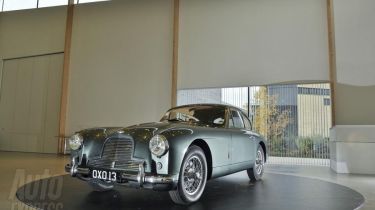Aston Martin DB2/4
1953-1957: Grand tourer set the template for all future Aston Martins
Take a look at the history books, and you’ll find Aston Martin’s rich heritage stretches back to 1915. But it wasn’t until wealthy industrialist David Brown stepped in to save the cash-strapped firm in 1947 that the famous British brand was really able to make its mark.
The first car to roll out of the factory under the new management was the 2-litre Sports, which was based on ageing pre-war mechanicals. However, the final 16 examples were renamed DB1, making it the first Aston to bear the initials
of the marque’s new owner.
Fans would have to wait until 1950 for an all-new model to break cover. With its race-winning credentials and high-performance mechanicals, the DB2 was a bold departure from its predecessors.
Underneath its long bonnet was a 105bhp 2.6-litre straight-six that propelled the rakish coupé to a top speed of 110mph. Three years later, bosses pulled the wraps off the stunning DB2/4 in our pictures. With a 2+2 seating layout and large hatchback tailgate, the newcomer promised to deliver practicality as well as performance.
Power came from a 125bhp version of the 2.6-litre engine, while buyers wanting extra pace could fork out for an upgraded 140bhp 2.9-litre unit that promised genuine 120mph performance. There was also the option of a convertible version, known as the Drophead Coupé.
Even today the DB2/4 looks remarkably fresh, despite being nearly 60 years old. Look closely and you’ll spot a number of cues that the old machine shares with the current line-up, including the trademark grille and subtle kick in the C-pillar.
Inside, the DB is pure classic British sports car, thanks to a cabin that’s dripping in soft leather and beautifully crafted wood veneer. Delicate black and white Smiths dials line up across the centre of the dashboard, while the massive steering wheel would not look out of place on a bus.
But it’s hard not be bowled over by the sense of occasion when sitting in the driver’s seat of the DB2/4. Production ended in 1957, by which time 764 examples had found homes – and the template for every modern Aston Martin had been set.
* Value: £110,000-£500,000 (est)
* Engine: 2.6-litre straight-six, 125bhp
* Transmission: Four-speed manual
* 0-60mph/top speed: N/A/110mph
* Cars built: 764






